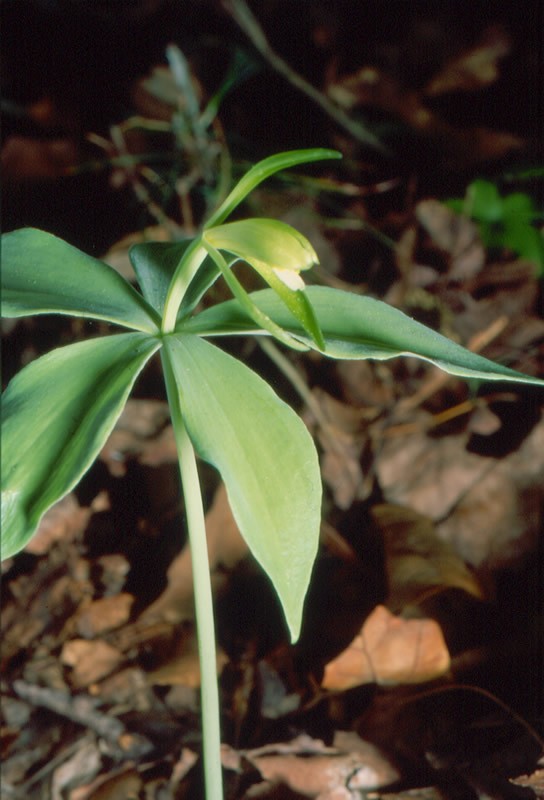Botanical specialists at the Vermont Fish and Wildlife Department recently announced that they found a plant species that was thought to be extinct since 1902. These plants are small orchids that have populations once scattered across the state.
Department botanist Bobb Popp explained that the rediscovery of the federal-threatened orchids unknown through a long history of Vermont surprised their team. The identification of the plant is equivalent to Vermont's rediscovery of the rare avian known as the ivory-billed woodpecker.
Threatened Orchid Isotria Medeoloides Confirmed in Vermont

Isotria medeoloides, small whorled pogonia
The plant that wildlife experts recognized was the Isotria medeoloides, commonly known as the small whorled pogonia. Today, this orchid species is hard to find globally, but more than 100 years ago, the plant grew large populations across Ontario and the eastern states of the US.
There were previous studies that attempted to find the remaining plants and analyze them, but all of these were unsuccessful at collecting even a single orchid.
In the latest update by the Vermont Fish and Wildlife Department, the small whorled pogonia was confirmed to exist again in the plains of Chittenden County's conservation area Winooski Valley Park District.
Scientific records lack data about many orchids, including the small whorled pogonia. Because of this, there is a limit to what experts know regarding the rare species' right environmental conditions and habitat needs.
Vermont state's assistant botanist Aaron Marcus said in the agency's press release that locating the remaining populations of these orchids is challenging due to the unknown needs the plants have in terms of the type of soil they grow and the measurement of network and fungi, factors which could not be easily seen and measured.
Wildflower enthusiasts might have contributed to this problem, as recent reports showed that other small whorled pogonias are sprouting out in areas with partial sunlight in New Hampshire and Maine, such as forest edges and openings.
ALSO READ: Octopus Intelligent Brains Has Same Set of Transposable Element in Humans
Finding More Small Whorled Pogonia and Plans for Preservation Efforts
Marcus and the team were first notified through these separate discoveries conducted by community specialists John Gange and Tom Doubleday.
Marcus said that Gange is a skilled botanist that specializes in studies over orchids and even observes discoveries personally through the feed of sightings in a science community application called iNaturalist.
Gange discovered that a retired greenhouse manager Doubleday asked about the identity of a similar plant back in July 2021. The plant was identical to the orchid that was recently discovered in Vermont.
The illegal collection is one of the major threats to the population of orchids. Alongside this risk, other overseen reasons exist, such as passive visitors accidentally trampling the plants. Doubleday deleted the exact coordinates of the orchid from his iNaturalist post to prevent any casualties to the remaining small whorled pogonia.
The four experts went back to the location of the small whorled pogonia and took valuable data without inflicting any harm to the plant. The next step of the department is to collaborate with the Winooski Valley Park District to look for more remaining species populations and monitor them for preservation, reports Good News Network.
RELATED ARTICLE: Never-Before-Seen Carnivorous Plant Hides Underground and Traps Prey
Check out more news and information on Biology in Science Times.














